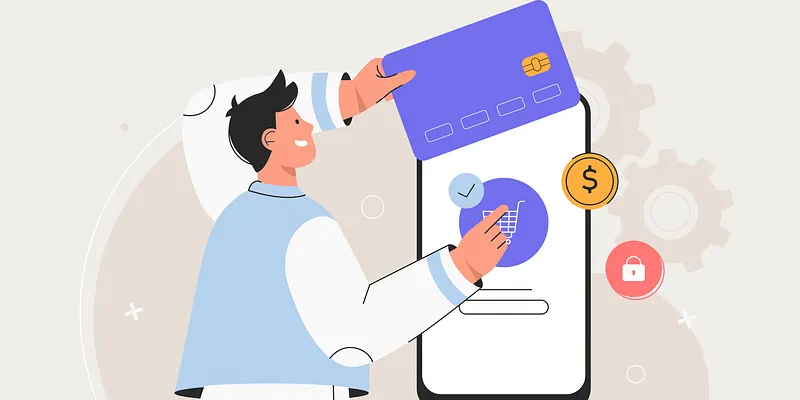MENA region sees a rise in BNPL service, driven by youth and women
Buy-now-pay-later is becoming increasingly popular in the region, especially among the youth and women. However, it comes with the risks of credit default and debt accumulation.
The buy-now-pay-later (BNPL) service is growing in popularity in the Middle East North Africa (MENA) region, and the primary demand is coming from youth people and women.
According to a report by Redseer, the BNPL market is pegged at $1.5 billion in MENA. Among the BNPL users in the region, more women (13%) featured in the mix than men (8%) in 2022. Also, more people of Gen Z (15%) used BNPL compared to Gen X (6%) and Gen Y (12%).
Several factors such as interest-free offerings, transparent processes, soft checks vis-à-vis traditional banks, shorter wait times, and government support are contributing to the growth of BNPL in the region.
Hassan Awada, Senior Vice President, Kroll, a risk and financial advisory firm, says the COVID-19 pandemic accelerated the acceptance of BNPL in the region.
“The widespread adoption of mobile shopping, as a result of COVID-19 pandemic, made consumers look for alternative funding methods, which are easy and flexible and blend the benefits of credit, short repayment terms, and transparent repayment terms when compared to credit cards,” he explains.
Why is BNPL seeing greater traction among the youth?
Akshay Jayaprakasan, Associate Partner, RedSeer MEA, says youngsters are far more likely to adopt BNPL as they find it less tedious than traditional banks.
“Younger generations seek alternative payment means compatible with their income status. They are relatively under-credited by conventional banks, which have tedious screening and application procedures,” he says.
With the growing adoption of BNPL in the fashion and luxury segments, BNPL is also becoming popular among women. Existing fintech firms are also increasingly collaborating with popular brands to offer this service.

Source: Redseer
Spurt in BNPL players
There has been a spate of activity in the BNPL segment in the MENA region.
In November 2021, UAE-based BNPL company Postpay partnered with MasterCard and Commercial Bank of Dubai to introduce a virtual BNPL card solution. It has also tied up with several leading international and local brands, including Ounass, H&M, The Entertainer and Squat Wolf, Footlocker, and Alshaya Group (Kuwaiti retailer with franchise rights for Starbucks and Hennes and Mauritz, among others, in MENA).
Several merchants and homegrown companies such as Cashew, Tamara, Tabby, and Postpay are also addressing the latent consumer demand for BNPL by offering this service.
Selfologi makes access to cosmetic clinics across UAE, Saudi Arabia easier
Market opportunity
To exploit opportunities in BNPL, Akshay of Redseer suggests that existing and new players should venture into a subscription model, such as the one offered in gyms and OTT platforms, and look at other untapped sectors, beyond fashion and electronics.
He also recommends making BNPL available in offline stores, so that people have another payment option, along with UPI, credit and debit cards, to make purchases.
According to the Redseer report, offline payment can be streamlined through BNPL, either through POS integration or by minimising the payment steps. The report also suggests that the market in MENA can learn from more developed markets like the UK where BNPL contributed about 7% of overall transactions in 2022.

With two-thirds UAE insurers looking to leverage tech, insurtech is on a rising tide
Risks associated with BNPL
On the flip side, the BNPL service, although popular among consumers, comes with the risk of credit defaults and debt accumulation.
According to a report by Moody’s Analytics published in 2022, young adults, particularly those below the age of 35, are much more likely to default on loans than older borrowers. This suggests that BNPL is exposed to a particularly risky cohort, which is likely to earn less, have a weaker attachment to the labour market, and is less reliant on traditional sources of income.
There is also the apprehension that the BNPL scheme will draw people who are experiencing financial hardships and are finding it difficult to keep up with their current obligations.
“BNPL startups frequently assert that the payment method increases customers’ purchasing power and offers financial flexibility. But some experts have expressed the concern that the fintech product may encourage people to spend more than they can afford and lead to debt accumulation, particularly among young people,” says Mohit Shrivastava, Chief Analyst, ICT, Future Market Insights.
Checks and balances
Checks and balances must be put in place while offering BNPL service to avoid debt worries and credit defaults. Towards this, regional governments are closely monitoring the growth of BNPL in the market. For instance, Saudi Arabian Central Bank has made it mandatory for all BNPL enterprises to obtain a permit for offering their services.
Mohit says collaboration with the government can help BNPL firms take advantage of compliances and legislation to understand their users better, and thereby prevent debt and default.
“Governments in GCC are assisting BNPL companies in structuring the flow of funds, the customer experience, and the terms of consumer credit (loan term, number of instalments, principal amount, default interest charge, assignment or sale of debt to lenders). As a result, BNPL companies and credit financing institutions may be able to obtain a more complete picture of each consumer’s credit risk profile,” he elaborates.
Edited by Swetha Kannan







